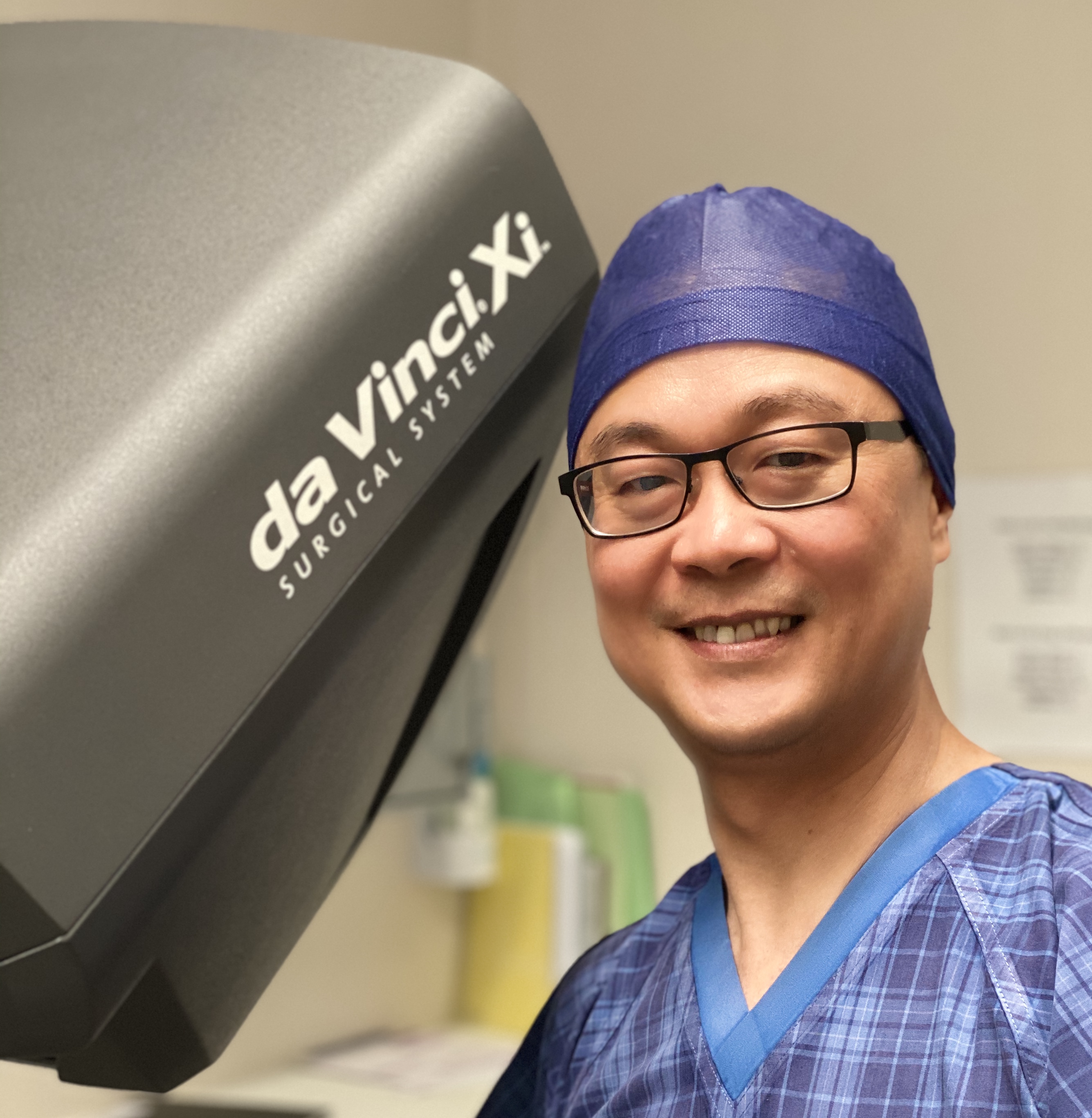Dr Boon Kua
MBBS, FRACS (Urology)

Services
Robotically assisted prostate cancer surgery
Urology
Suite 5, Level 9
Evan Thomson Building
24 Chasely St
AUCHENFLOWER QLD 4066
Dr. Boon Kua completed his Bachelor of Medicine and Surgery in 1994 at the University of Queensland. He was accepted into the advanced training program for general surgery before commencing training in urology in 2002. He spent a year of his urologic training at the renowned Royal Prince Alfred (RPA) hospital in Sydney before returning to Queensland to complete his training. He was awarded his specialist qualification, FRACS (Urology) in 2005.
He received extensive training in open and laparoscopic surgeries in urologic cancers and was routinely performing laparoscopic (keyhole) surgeries for prostate cancers prior to transitioning to DaVinci robotic surgery in 2010. He undertook a certified training course in da Vinci robotic surgery at the Global Robotics Institute in Florida, USA prior to helping set up the da Vinci robotics program at the Wesley hospital in 2010. To ensure the surgeries were performed to the highest standards, he was proctored by 2 pre-eminent urologic surgeons in the country, Professor Anthony Costello from the Epworth hospital in Melbourne and Dr Peter Sutherland from the Royal Adelaide Hospital. Both are pioneers in da Vinci robotic surgery in Australia and are recognized as experts in their fields.
With over 10 years of experience in da Vinci robotic surgery and almost 1500 cases as primary surgeon and proctor to urologists and trainees, Dr Kua is now one of the most experienced da Vinci robotic surgeon in the country. He is a certified da Vinci robotic surgery proctor for Device Technology, distributor of da Vinci robotic surgery in Australia. He is the co-chair of the Robotic Surgery Advisory Group at the Wesley hospital and helped the Wesley hospital achieve its recognition as the first Centre of Excellence in Robotic Surgery (COERS) in Australia. This prestigious recognition was formally awarded by the International bodies of Clinical Robotic Surgery Association (CRSA) and Surgical Review Corporation (SRC) in 2017.
As part of his continuing professional development, Dr Kua participates in the RACS CPD program and the Prostate Cancer Outcome Registry (PCOR-QLD). He teaches and supervises Bond University medical students through the Wesley Clinical School. He helped set up the Wesley urology multi-disciplinary team meeting in 2006 and is a regular attendee of the meeting to share his knowledge and learn from his peers on complex urologic oncology cases. Through collaboration with his peers across disciplines at the Wesley Hospital, he has published multiple articles in peer-reviewed journals.
Aside from da Vinci robotic surgery, Dr Kua is also experienced in prostate brachytherapy for prostate cancer. He completed his certified brachytherapy training course at the Seattle Prostate Institute, USA in 2006. Since then, he has worked collaboratively with radiation oncologists from Genesis Cancer Care at the Wesley hospital in delivering high-dose-rate and low-dose-rate brachytherapy to suitable patients for over a decade.
With widespread use of 3T multi parametric prostate MRI scan in the diagnosis of prostate cancer, focal therapy has emerged as an alternate to whole gland treatment for prostate cancer. With that in mind, he undertook certified training in prostate Nanoknife (aka irreversible electroporation) in Germany in 2018. He also visited Professor Stricker at St Vincent’s hospital in Sydney, which at that time was the only centre in Australia offering prostate Nanoknife, to gain further experience and insight into prostate Nanoknife. Together with Associate Professor John Yaxley, he performed the first prostate Nanoknife in Queensland in August 2018. The Wesley hospital is currently the only centre in Queensland offering this novel treatment to suitable patients.
Cognisant of the side-effects of erectile dysfunction and stress urinary incontinence from prostate cancer treatments and the subsequent negative impact on the quality of life of men, he undertook training in surgical treatments for erectile dysfunction and stress urinary incontinence. He received training in penile prosthesis from eminent implanters in the world such as Professor Steve Wilson and Dr Paul Perito from the USA and Professor David Ralph from the UK. For over a decade, he worked collaboratively with Associate Professor Hodo Haxhimolla from Canberra in performing penile prosthesis in men. He also received training in ATOMS procedure from Associate Professor Wilhelm Bauer from Austria, inventor of ATOMS sling, to treat stress urinary incontinence. His ultimate goal is for men not to be left with disabilities negatively impacting on their quality of life after successful prostate cancer treatment.
In surgery, the skill and experience of the surgeon matters. Surgical services offered by Dr Kua at the Wesley hospital include:
Da Vinci robotic keyhole surgeries for:
- prostate cancer and prostate enlargement
(Dr Kua specializes in nerve sparing radical prostatectomy whereby the erectile nerves are preserved where feasible)
- kidney cancer or PUJ obstruction
(Dr Kua specializes in nephron sparing surgery for kidney cancers whereby the kidney tumour/cancer is removed without removing the remaining healthy kidney. His success rate in such surgery is over 95% in about 200 cases)
- invasive bladder cancers
- ureteric pathologies such as cancers or strictures/narrowing
- adrenal tumours
- pelvic masses
Nanoknife for prostate cancer
Brachytherapy for prostate cancer
Penile prosthesis for erectile dysfunction not responding to medical therapy
Slings or sphincters to treat stress urinary incontinence in men only
Treatments of enlarged prostate /BPH (benign prostatic hyperplasia)
-Saline TURP (transurethral resection of prostate)
-Laser TURP
-UROLIFT
-REZUM
Vasectomy and Vasectomy reversals
Shockwave and endoscopic/ ureteroscopic laser treatments for stones in the urinary tract














